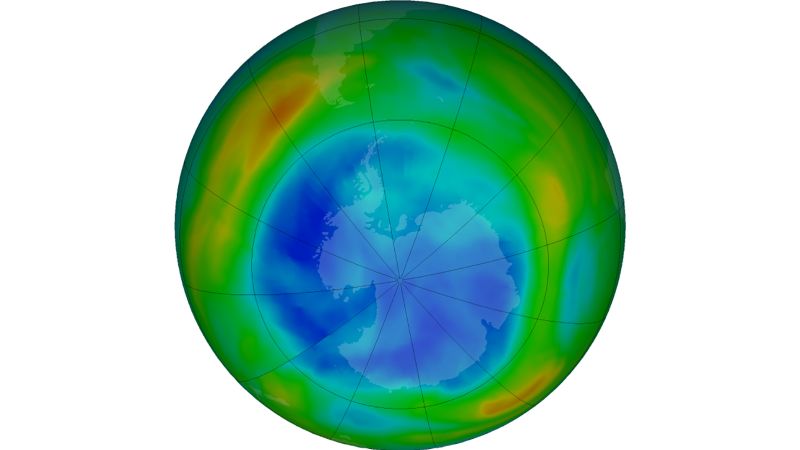Watch the giant hole in the ozone layer form 0:48
(CNN) --
Earth's ozone layer is on track to make a full recovery within decades as chemicals that affect this protective shield continue to be removed worldwide, according to a new assessment backed by the United Nations.
The ozone layer protects the planet from harmful ultraviolet rays.
But since the late 1980s, scientists have been sounding alarm bells about a hole in this shield, caused by ozone-depleting substances, including chlorofluorocarbons, nicknamed CFCs, often found in refrigerators, aerosol sprays, and solvents.
International cooperation helped stop the damage.
The use of CFCs has decreased by 99% since the entry into force in 1989 of the Montreal Protocol, which began the phase-out of these and other ozone-damaging chemicals, according to an assessment by a group of experts published on monday.
If global policies are maintained, the ozone layer is expected to return to 1980 levels by 2040 in most of the world, according to the assessment.
For the polar areas, the recovery period is longer: 2045 in the Arctic and 2066 in the Antarctic.
What can we learn from the ozone layer process?
"Ozone action sets a precedent for climate action. Our success in phasing out ozone-depleting chemicals shows us what can and must be done urgently to move away from fossil fuels, reduce greenhouse gases and thus limit the increase in temperature," said the Secretary General of the World Meteorological Organization, Petteri Taalas.
advertising
Gases that deplete the ozone layer are also potent greenhouse gases, and without a ban the world could have seen an additional warming of up to 1 degree Celsius, according to a 2021 study published in the journal Nature.
The planet has already warmed by around 1.2 degrees since the industrial revolution, and scientists have warned that the increase should be limited to 1.5 degrees to avoid the worst consequences of the climate crisis.
According to scientists, warming of more than 1.5 degrees would dramatically increase the risk of extreme droughts, wildfires, floods, and food shortages.
For the first time in this assessment, which is published every four years, the scientists also looked at the prospects for solar geoengineering: the attempt to reduce global warming through measures such as spraying aerosols in the stratosphere to reflect sunlight off the terrestrial atmosphere.
The researchers concluded that the injection of stratospheric aerosols could contribute to reducing climate warming, but warned that it could have unintended consequences.
Deployment of this technology "could also affect stratospheric temperatures, circulation, and rates of ozone production and destruction and transport," according to the report, which is published every four years.
Ozone layer

